There are also films with native Japanese dogs in the star role, however outside Japan they are mostly unknown. The most prominent film of this kind is probably Hachiko Monogatari ("The tale of Hachiko") from 1989 that is dedicated to a historical Akita by the name of Hachiko. This legendary dog used to wait every afternoon at the metro station Shibuya in Tokyo to meet his owner returning from work. In 1925 his owner died unexpectedly but the true Hachicko continued going to the station every day. He kept on waiting for his master for 10 years until his death in 1935. The Akita Hachiko became famous throughout the country in his lifetime, later a memorial statue was raised and in Japan up to date he is a symbol for the loyalty of a dog.
Also the Shiba takes centre stage in some Japanese films. We have already introduced the film "Walking with the dog" starring the Shiba Chiori on our website. Here we want to present another two successful films with Shibas. They are entitled Harras and All About My Dog.
All About My Dog from 2004 is a contemporary variation of the Hachiko motif of a loyal dog. The film is about Kentaro Yamada (Shidou Nakamura), a young man working in an advertising company. Yamada has problems in his current job, a promotion for dog food. Walking one night after a frustrating working day downtown he sees an ownerless Shiba. This dog brings back memories of his childhood. As a young boy of about 12 years of age he befriended a Shiba who lived alone in an empty field on the outskirts. He used to play with this Shiba whom he called Pochi, feeding him with doughnuts that he purchased in a bakery directly beside the field.
There follows a return in time when Yamada became friends with Pochi and played with him in the field. We see him buying doughnuts in the bakery daily served by a young girl his age. The girl watches the friendship between the boy and the Shiba through the shop window. One day Yamada is looking for his friend during heavy rain. He looses consciousness and breaks down on the ground. Pochi and the girl from the bakery find Yamada and due to their help he is taken to hospital.
Pochi now searches for his friend all over the town, always carrying the tennis ball in his muzzle which Yamada used when playing with him. When he hurts his leg he is taken by compassionate people to a hospital where just, by chance, the girl from the bakery is being treated. From then on Pochi keeps waiting – as Hachicko as that time at the metro station – at the entrance of the hospital where he is fed by the staff. One day Yamada incidentally passes by and they meet again. But despite the big joy of reunion the boy fails to take the dog home.
Another leap in time and we are back again in the present with Yamada's problems caused by the failed ad campaign. Yamada decides to return to the place where he used to play with Pochi. The bakery is still there and also the girl, in the meantime a young lady, is still serving. At night Yamada is haunted by memories and he goes to the empty field. He really meets his friend and plays with him as in the old days – but then Yamada realises to his bitter disappointment that he had imagined everything, that it was just a great dream.
The story of Yamada and Pochi is interrupted from time to time by filmstrips outside the story line in which several Japanese film makers from different sectors (animation, advertising etc.) present their pet dogs. Thus not only Shiba lovers but also fanciers of other breeds find their accounts.
The second film Harras from 1989 is the story of a middle-aged couple. The man works as a professor for German literature at the university, and they live in a nice house in suburban Tokyo. They have no children and are thus very pleased when one day they unexpectedly receive as a present a Shiba puppy by the name of Harras. The pup becomes their substitute for a child and as one can treat children wrongly, the same can happen to a young dog. When Harras at night on the veranda where he is chained in his hut annoys the neighbourhood by barking, he is beaten severely by the man, even though he loves him very much.
We will skip the middle part of the film and come to the last part. Twelve years have passed and the couple takes Harras with them for a skiing holiday in the mountains. They all enjoy the snow and the beautiful landscape but one evening the nightmare of almost all Shiba owners happens: Harras leaves the accommodation and disappears for days. After a long wait and a desperate search they finally find him and are overjoyed.
Then Harras gets ill and the veterinarians diagnose a malignant tumour. The man and his wife cannot decide on putting down their beloved dog prematurely und so he is ailing. Later on, returning home one day from a wedding ceremony in the morning the couple finally finds Harras dead in his favourite chair on the veranda.
The two films presented here were made by renowned directors and are cast with excellent actors. They are sentimental films using beloved dogs to show the mistakes people can make in life and how much missed opportunities can hurt.
Information:
Director: Isshin Inudou. Cast: Shido Nakamura, Misaki Ito
Double DVD (Film and "Making of"), Japanese; available via Internet.
Harras – Japan 1989 (right)
Director: Tomio Kuriyama. Cast: Go Kato, Yukiyo Toake
DVD, Japanese; available via Internet.
Also published in Shiba World Vol. II 2007
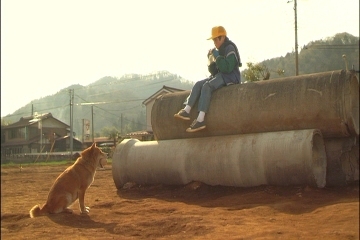
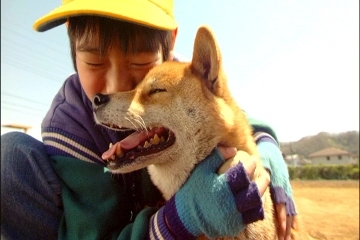
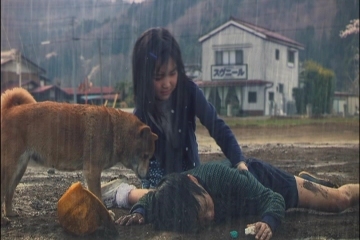
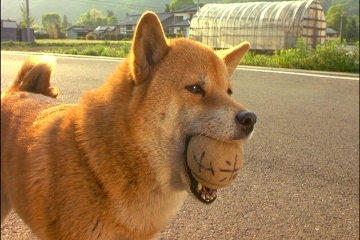
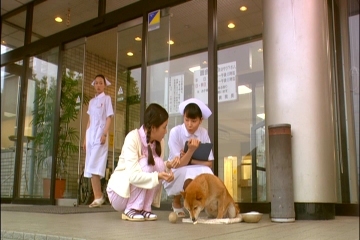
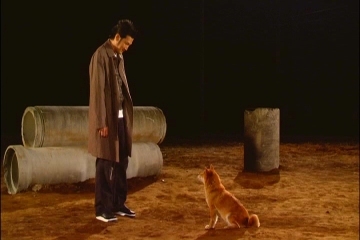
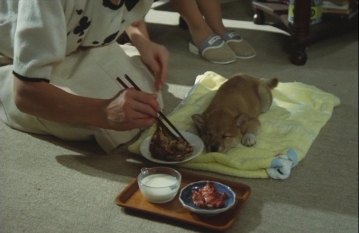
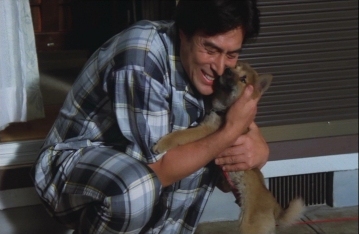
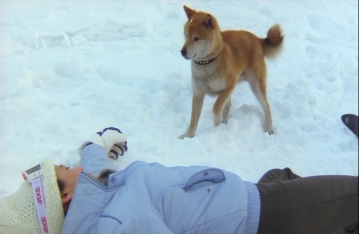
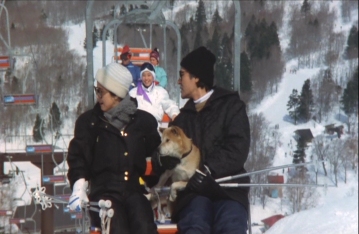
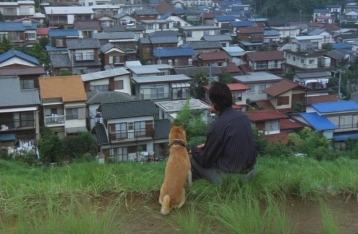
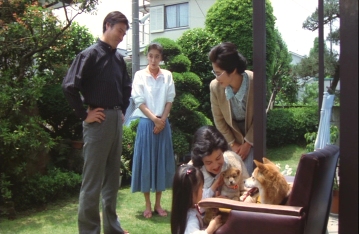

All About My Dog – Japan 2004 (left)
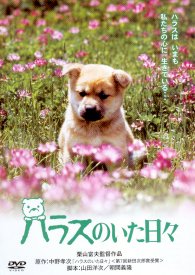
© Holger Funk 2007